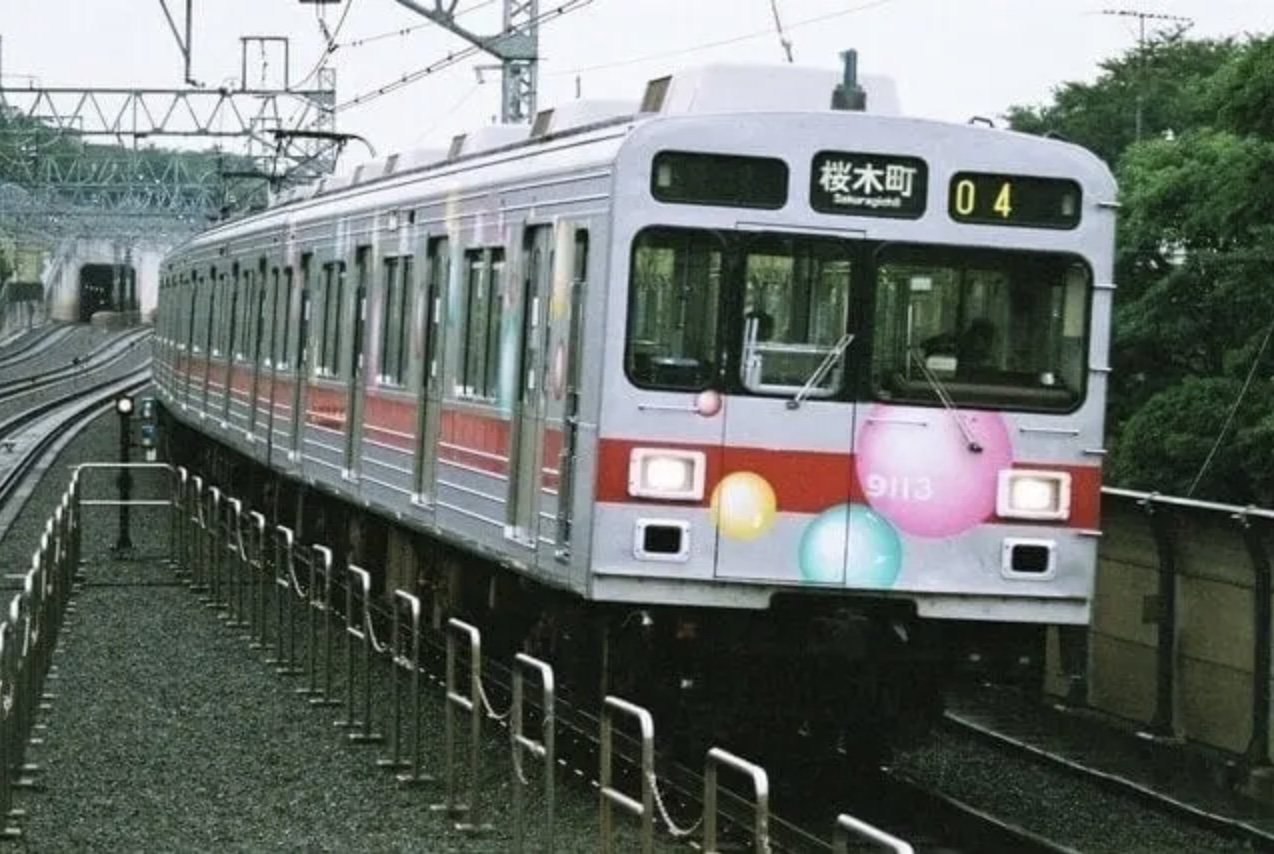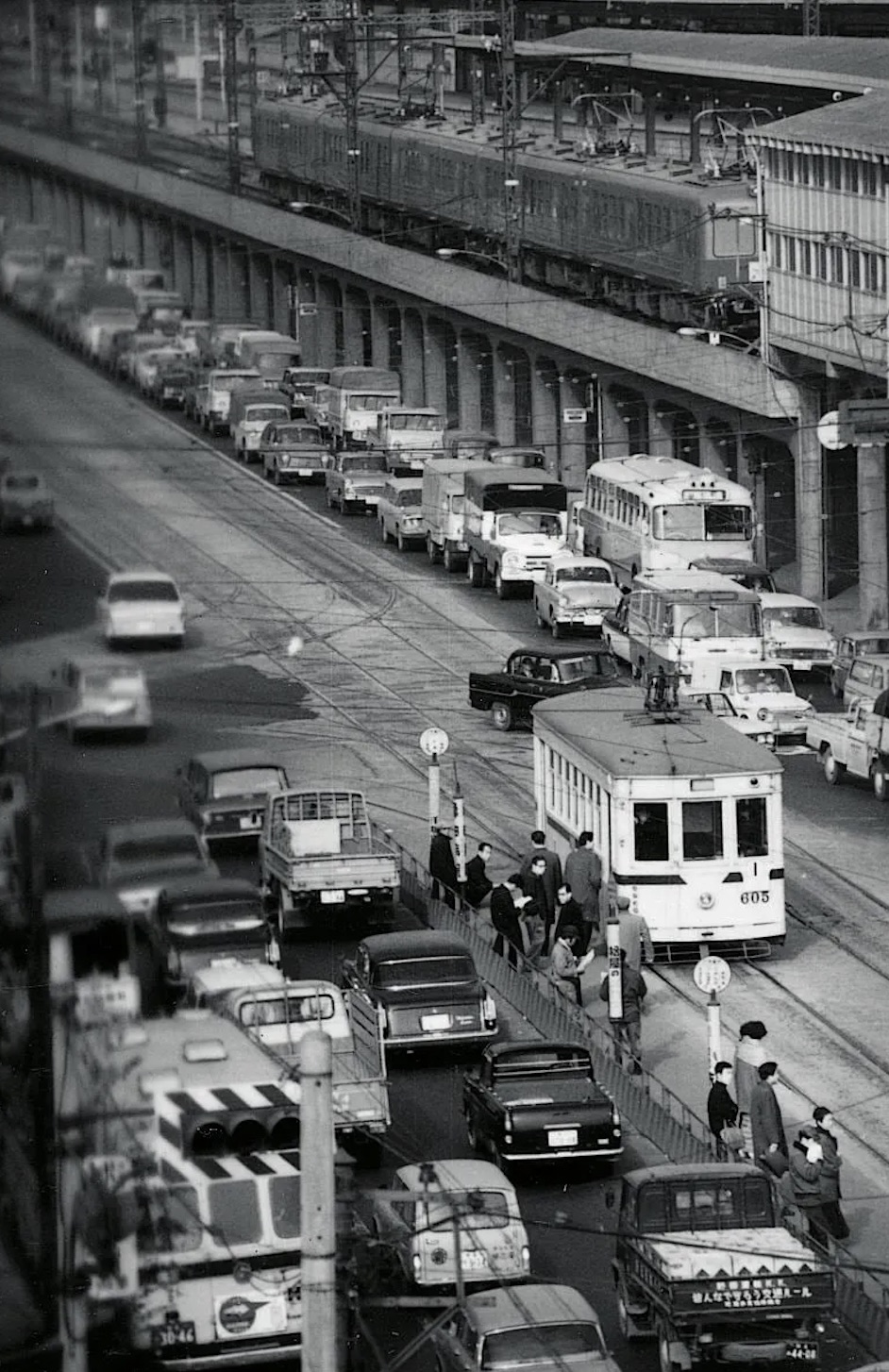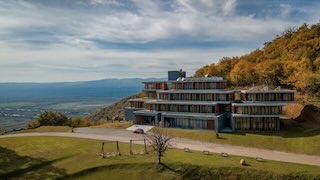YOKOHAMA, Feb 08 (News On Japan) - Once, the terminus of the Tokyu Toyoko Line on the Yokohama side was Sakuragicho Station. It has been exactly 20 years since the section between Yokohama Station and Sakuragicho Station was discontinued on January 31, 2004, due to the start of direct operations with the Yokohama Minatomirai Line. At the same time, the section between Higashi-Hakuraku Station and Yokohama Station was also moved underground.

I decided to take a walk to see what has become of the former railway tracks. "Wow, has it already been that long?" I thought. It's been precisely 20 years since the section between Yokohama Station and Sakuragicho Station on the Tokyu Toyoko Line was discontinued in January 2024.
I used to commute to a university along the Toyoko Line and lived in an apartment near Tsunashima Station. Although it's been nearly 30 years, I have many memories. Once, after a drinking party in Shibuya, I fell asleep on the train and woke up at Sakuragicho Station. I fell asleep again and didn't wake up until I returned to Shibuya, where I finally sobered up and found myself at a loss.
On January 31, 2004, the section between Yokohama Station and Sakuragicho Station was discontinued, and the section between Higashi-Hakuraku Station and Yokohama Station was moved underground, changing the landscape along the line completely. I decided to walk the path again (the current photos were taken in 2023).
The first place I headed to was Higashi-Hakuraku Station, the southernmost station of the Toyoko Line's above-ground section. The unusual place name "Hakuraku" is said to come from the fact that many horse dealers (bakuro) lived in this area, which was near Kanagawa-juku (a post station on the Tokaido). During my student days, I didn't pay much attention, but upon researching, I found place names quite interesting.
Crossing in front of Higashi-Hakuraku Station is Prefectural Road No. 12 (Yokohama Asao Road), where the Yokohama City Tram's Rokkakubashi Line once ran. The tram line was discontinued in 1968, a long time ago. Across this road is the entrance to the "Tokyu Flower Greenway," which was developed using the former above-ground Toyoko Line tracks.
Stepping onto the Greenway, I found a bit of a stream, giving it an oasis-like atmosphere in the city. As I walked further, I soon saw the opening where the Toyoko Line goes underground. Trains were being swallowed into and spit out of the dark, gaping mouth, like an entrance to another world.
The Greenway extends directly above the underground Toyoko Line toward Yokohama. As I walked along, I could occasionally hear the rumble of trains passing underground through the ventilation shafts.
About 200 meters down the Greenway, I came across a slightly wider road. If you're not careful, you might miss it, but at the corner of the intersection, there's a small signboard planted in the landscaping of a condominium, modeled after a station platform sign, reading "Shin-Otacho Station Ruins."
"Shin-Otacho" was once a station name on the Toyoko Line. The signboard is weathered, making the text difficult to read, but it says the following about Shin-Otacho Station: "The Tokyu Toyoko Line's Shin-Otacho Station was established on February 14, 1926, and was suspended from operation on June 1, 1945, due to damage from an air raid on May 29, 1945, and was abolished on May 31, 1946. Later, during the Japan Trade Fair held in nearby Tammachi in 1949, the old station was temporarily revived as "Expo-mae" Station from March 15 to June 15, 1949."
After its abolition, the station was temporarily revived, earning it the nickname "phantom station."

Continuing my walk, I found sections where rails were embedded into the boardwalk, adding to the enjoyment of a "disused line" journey.
About 300 meters from the Shin-Otacho Station ruins, before reaching Tammachi Station, there's a bridge crossing National Route 1 (Yokohama Shinmichi). This bridge (Tokyu Flower Greenway Tammachi Bridge) utilizes the former Toyoko Line railway bridge.
Passing Tammachi Station, the Takashimayama Tunnel soon comes into view. This tunnel is also a remnant of the former Toyoko Line. The "Tokyu Corporation 50-Year History" records the challenging construction of the Takashimayama Tunnel as follows: "The Takashimayama Tunnel was, at the time, an exceptional double-track tunnel with a length of 173.72 meters in the Kanto private railway sector. Initially scheduled for completion in January of Taisho 15 (1926), it was delayed due to cracks in the tunnel's crown near completion, but it was finally completed in time for the opening day on February 14."
Takashimayama (in Kanagawa-ku Takashimadai) is associated with Kaeimon Takashima (1832-1914), a Yokohama businessman and diviner (ancestor of "Takashima Easy Judgment"). Kaeimon made significant contributions to the formation of Yokohama as a city, including establishing the Western-style school "Takashima School" and starting a gas business, and is also known as one of the "benefactors of Yokohama."
Kaeimon was also deeply involved with the railways. During the construction of Japan's first railway between Shinbashi Station and Yokohama Station (now Sakuragicho Station), he played an active role. He took on the reclamation (embankment) of the sea from the area near Aoki-cho in Kanagawa-ku, which was considered a difficult construction spot called "Sodegaura," up to near the first Yokohama Station. He directed and supervised the construction from Takashimayama (then called Otsuna Mountain).
The reclaimed land created by Kaeimon was named "Takashima-cho," and the name still remains today (such as in Nishi-ku, Takashima, Yokohama). At the top of Takashimayama is Takashimayama Park, where the "Boukindai Monument" commemorates Kaeimon. After retiring from the business world, Kaeimon built a large villa on this hill, where he once directed the reclamation work, and it is said that he "healed his heart alone in pleasure" while looking at the thriving city of Yokohama.
There were three different Kanagawa Stations on the Toyoko Line. Beyond the Takashimayama Tunnel, there once was a Kanagawa Station on the Toyoko Line. When the Toyoko Line (then the Tokyo Yokohama Electric Railway) opened between Tamagawa Station (now Tamagawa Station) and Kanagawa Station in February 1926, it was the terminus station, intended to connect with the Railway Ministry line (now JR Tokaido Line) Kanagawa Station.
Both the Toyoko Line's Kanagawa Station and the Ministry line's Kanagawa Station were later abolished and no longer exist. I wonder what those stations were like.
First, the Ministry line's Kanagawa Station was established as an intermediate station when the railway between Shinbashi Station and Yokohama Station (now Sakuragicho Station) opened in 1872. It was located near the midpoint between Aokibashi and the current Yokohama Station.
However, Yokohama Station was later relocated to Takashima-cho in 1915 (the second Yokohama Station), and after the second Yokohama Station was destroyed in the Great Kanto Earthquake of September 1923, the third Yokohama Station opened at its current location in October 1928. Due to the proximity of the third Yokohama Station, the Kanagawa Station was abolished.
The 1927 topographic map shows that the Toyoko Line's Kanagawa Station was initially placed just west of the Ministry line's Kanagawa Station. However, when the Ministry line's Kanagawa Station was abolished in October 1928, the Toyoko Line's Kanagawa Station was relocated near the exit of the Takashimayama Tunnel. Like Shin-Otacho Station, it was damaged by air raids during the war, suspended operations, and was abolished in 1950.
Keikyu Corporation still has a Kanagawa Station. The origin of Keikyu's Kanagawa Station was the Kanagawa Teisha-mae Station, established when Keihin Electric Railway (now Keikyu Corporation) extended to Kanagawa in 1905 (later renamed to Kanagawa Station).
The original Kanagawa Station was later abolished, and Aokibashi Station was renamed to Keihin Kanagawa Station and then to Kanagawa Station, continuing to exist to this day.
The entrance to the Greenway on the Yokohama Station side is a bit hard to find. About 200 meters beyond the Takashimayama Tunnel exit, the "Tokyu Flower Greenway" ends. Even a leisurely walk from Higashi-Hakuraku Station to this point takes less than an hour. However, many stations used to exist in this short section: Higashi-Hakuraku Station - Shin-Otacho Station (abandoned) - Tammachi Station - Kanagawa Station (abandoned) - Yokohama Station.
Next, let's visit the disused track between Yokohama Station, Takashima-cho Station, and Sakuragicho Station. This section has been left almost as it was when it was discontinued, with the elevated bridge remaining, and there are plans to develop it into a promenade using the elevated bridge.
However, due to the city's worsening financial situation, construction has been postponed several times, and even 20 years after the discontinuation, only a short distance (about 140 meters) from Sakuragicho Station to the Momijizaka intersection has been opened to the public.
What is the status of the planned maintenance and opening of the remaining approximately 2 kilometers from Momijizaka to Yokohama Station? When I inquired with the Urban Transportation Division of the Yokohama City Urban Development Bureau, which is responsible for the maintenance, they replied, "Upon inspecting the seismic resistance of the elevated structure, we found concrete spalling and other issues, necessitating repairs and demolition of some structures. Particularly near the former Takashima-cho Station, the structure was significantly damaged, leading to the decision to abandon its use, and demolition is currently underway in some areas. Given these circumstances, the previous plans have been reset, and a basic plan is being redeveloped from 2022 to 2024. The timing of the opening is currently undecided."
It seems unlikely that the promenade will be opened to the public anytime soon, but various railway-related remains can be found along this section.
First, within the premises of a condominium at the Takashima-cho intersection, the brick remains of the foundation of the second Yokohama Station building are open to the public. You might wonder if it's okay to enter since it's on condominium property, but there's no need to worry. It's designated as a "public open space" under Yokohama City's urban environmental design system, so you can visit freely.
The second Yokohama Station building was a stylish two-story steel-framed brick structure, similar to the Marunouchi Station building of Tokyo Station, which opened the previous year in 1914. However, it was destroyed in the Great Kanto Earthquake just eight years after its completion in 1923. This station is also a "phantom station."
Next, let's stop by an interesting spot near the midpoint between Takashima-cho and Sakuragicho, around the Sakuragicho Rokuchome intersection. Hidden in the shadows of the elevated structures of the old Toyoko Line, the JR Negishi Line, and the Shuto Expressway, there's a small railroad crossing.
This crossing is for the JR Takashima Line (Tsurumi Station - Higashi-Takashima Station - Sakuragicho Station), a freight-only line, and is named "Mitsubishi Dock Crossing." It's named after the main gate of the Mitsubishi Heavy Industries Yokohama Shipyard, affectionately known as "Hama's Dock," which used to be nearby. The development of "Minatomirai" centered around this former shipyard site.
"Mitsubishi Dock Crossing" is still bustling with people coming and going. It's a surprising sight to see freight trains rumbling through a small crossing in the corner of Yokohama's building district, but it might be said to be a typical scene of the port city of Yokohama, where freight lines connecting wharves and factories have developed.
Let's continue walking to Sakuragicho Station. It may be surprising to hear that the area around the east exit (seaside) of Sakuragicho Station was once a large freight station called Higashi-Yokohama Station (opened in 1915, closed in 1979). Currently, a monument commemorating Higashi-Yokohama Station stands in a corner of the plaza.
In addition, around Sakuragicho Station, there are several remnants that remind us of the heyday of the railways, such as the British-made "Class 110 steam locomotive (No. 110)" used at the time of the railway opening, displayed on the first floor of the station building "CIAL Sakuragicho ANNEX," the "Birthplace of the Railway" monument outside the New South Exit (City Hall Exit), and the promenade "Kishamichi" utilizing the remains of the freight line (commonly known as the Customs Line) that passed through the Shinko Pier, where the Yokohama Red Brick Warehouse and others are located, and continued to the Yokohama Customs premises.
As I walk around Sakuragicho Station, amidst the hustle and bustle of people, I sometimes feel as if I can still hear the sound of the steam whistle of a land steamer.
Source: MDPR















